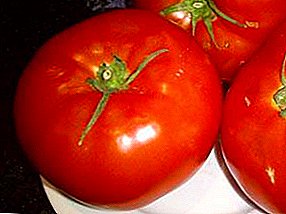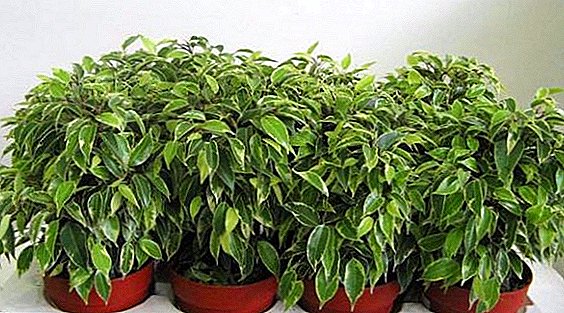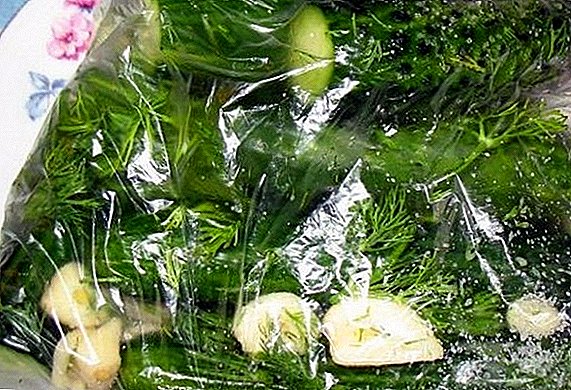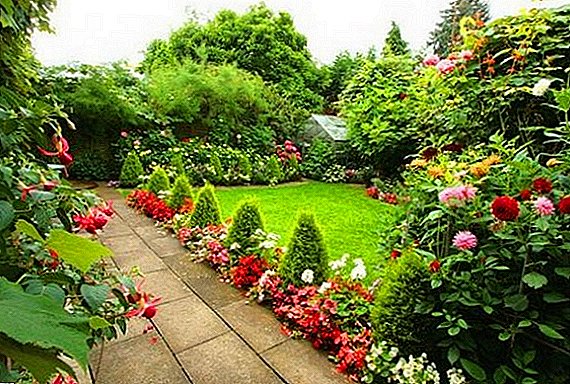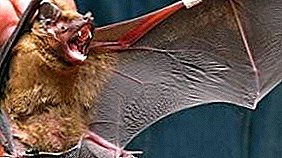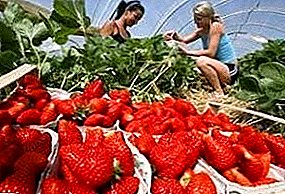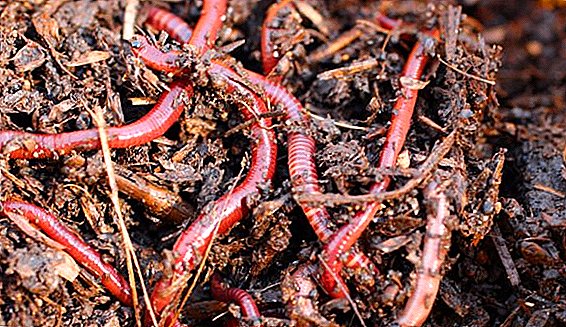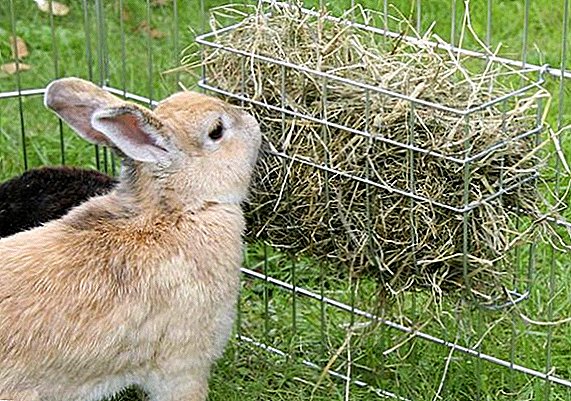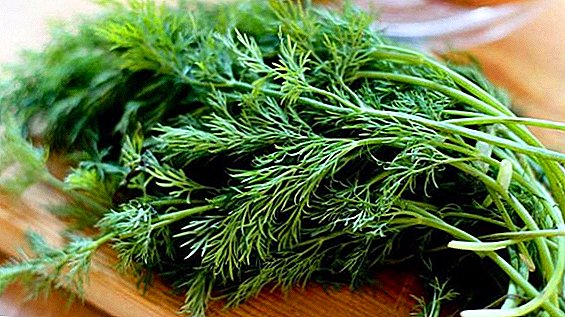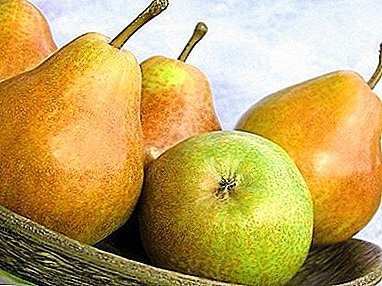
In recent years, the popularity of pears in Russia is growing rapidly. Especially great demand for it exists in the middle lane - a region that cannot boast of the same wide variety of vitamin products as the southern regions.
One of these cultures is pear variety "Favorite Yakovlev" - A description of the characteristics of the variety and the photo of the fruit below.
Gardeners are attracted by this spreading beautiful (especially when flowering) tree, capable of giving good yields and pamper gourmets with tasty fruits.
What kind is it?
"Favorite Yakovlev" refers to varieties that ripen in early autumn. With its ripeness, its green fruits with a golden hue are poured either at the very beginning or by the middle of September.
Autumn pear varieties include: Fairy, Uralochka, Silent Don, Tyoma and Larinskaya.
 Like many others early autumn pear, this species gives juicy fruits, which, due to their density and good keeping quality, can (under certain conditions) be stored for quite a long time.
Like many others early autumn pear, this species gives juicy fruits, which, due to their density and good keeping quality, can (under certain conditions) be stored for quite a long time.
It is known that "Favorite" can be stored without any problems for its quality and taste conditions up to November frosts.
Due to its dense consistency, these pears are capable of carrying long-distance transportation almost without loss, which is very important for the realization of the harvest in retail chains.
Another important feature of this pear is its relatively low self-fertility. Its level is such that many experts classify "Lyubimitsu Yakovlev" as partially self-bearing culture.
This means that the described variety due to pollination by its own pollen provides an ovary of about 10-25% of the total number of fruits. However, the numbers may vary in one direction or another, depending on the climatic conditions and the state of the environment.
In order to guarantee the normal fertilization and the development of a good harvest, it is recommended to plant a pollinator tree next to “Favorite Yakovlev”. The best pollinator for this variety is considered to be the variety "Summer Duchess" ("Williams").
Breeding history and breeding region
 Many years ago, the outstanding Russian scientist I.V. Michurin began the process of practical movement to the north of such a thermophilic culture as a pear.
Many years ago, the outstanding Russian scientist I.V. Michurin began the process of practical movement to the north of such a thermophilic culture as a pear.
His students and followers created many pear species that began to bear fruit well in the harsh conditions of central Russia.
One of these Michurin followers was Pavel Nikanorovich Yakovlev (1898-1957).
An outstanding breeder, doctor of agricultural sciences, professor, academician of the Academy of Agricultural Sciences, he did a lot for real adaptation of pear trees in the middle and northern zones of the Soviet Union. The variety "Lyubimitsa Yakovleva" became a living "monument" of his scientific activity.
Attention! Beginning gardeners confuse the variety "Pet Yakovlev" with other varieties and believe that it is a dwarf or columnar pear - this is a mistake, tree vigorous and fast-growing.
Work on the creation of a new species Academician Yakovlev spent in the city of Michurinsk (Tambov region) on the basis of the Central Genetic Laboratory. I.V. Michurin (now the All-Russian Research Institute of Genetics and Breeding of Fruit Plants).
In order to bring out a new pear with properties suitable for Russian regions with frosty winters and not very long summers, scientists made a systematic crossing of Michurin pear varieties "Daughter Blancova" with a belgian pear "Bergamot Esperen".
As a result, "Favorite Yakovlev" was included in the State Register of breeding achievements of the Russian Federation for zoning in Central (Moscow, Ryazan, Tula, Kaluga regions), Central Black Earth (Tambov, Lipetsk, Belgorod regions) and Middle Volga (Penza, Samara, Ulyanovsk regions, Mordovia, Tatarstan) agricultural regions.
The varieties of pears Hera, Cathedral, Krasnobakaya, Elena and Vernaia feel well in the Middle Band.
Pear "Favorite Yakovlev": description of the variety and photos
The variety "Favorite Yakovlev" differs from other varieties of pear in the following external and structural parameters:

- Tree. Estimated as vigorous. At the same time, up to its maximum dimensions, a tree grows quickly enough under favorable conditions. The bark is covered with a smooth grayish bark.
- Crown, branches. The top of the tree as it gets older takes the form of a wide pyramid. Gray-colored branches depart from the trunk almost at a right angle. The shape of the crown is estimated as average.
- Shoots. In a few bent, with a weakly cranked shoots marked dark brown color. Among the fruiting formations dominated by spear and kolchatka.
- Leaves. Medium-sized leaves have the shape of an oblong egg. Color - green and dark green. The mid-sized kidneys - pointed tips. The buds are usually pressed to the branches.
- Inflorescences. Consist of 7-10 individual flowers. Flowers white color. Outwardly very attractive due to the distinct terry of its petals.
- Fruit. In the yield of this variety, one-dimensional fruits are dominated above the average size (the average weight of a pear reaches 130-140 g). The form is classical, pear-shaped, expanded. The skin of the fetus has a dull matte texture. The skin is of medium density, smooth to the touch. The color of the ripe fruit at the time of removal from the tree is yellow with a greenish tinge, in some areas of the skin a light tan is possible. After "ripening" fruits "Favorite" acquire a golden hue. On the pear there are a lot of hypodermic spots. Granulation with large "stony" cells is characteristic of medium dense, cream-colored flesh. Fruits are held on long, somewhat curved stalk.
For more information about the variety and see the pears "Favorite Yakovlev" can be in the photo below:




Specifications
The tree of this variety begins to actively bear fruit 3-4 year after landing sapling By the time the maximum yield is achieved, an adult plant at the age of 7 years, gives an average of 30-40 kg tasty products.
 Thus, in the period of full fruiting, up to 220-230 centners of sweet yield can be removed from one hectare of the garden.
Thus, in the period of full fruiting, up to 220-230 centners of sweet yield can be removed from one hectare of the garden.
The standard flavor for a ripe fruit from a tree at its most productive age is considered pronounced sweet half-oily taste, with a slight sourness, devoid of astringency, with original fragrant notes of quince.
Varieties of pears are distinguished by their magnificent taste: Victoria, Forest Beauty, Moskvichka, Lel and Talgar beauty.
In this case, the chemical composition of the fruit "Pet Yakovlev" looks like this:
| Composition | amount |
|---|---|
| Sahara | 8,3% |
| Acids | 0,10% |
| P-active substances | 32.7 mg / 100 g |
| Vitamin C | 8.5 mg / 100 g |
Experts evaluate the possibilities of using fruits as universal. In other words, they are equally good both in fresh form and in processed form.
From them, in particular, excellent compotes, jams, preserves, marmalades are obtained. These pears are popular, among other things, because they can be stored in a good consumer condition in a refrigerator for up to 80 days.
 The obvious advantages of this variety are also his good tolerance of arid climatic conditions and high winter hardiness.
The obvious advantages of this variety are also his good tolerance of arid climatic conditions and high winter hardiness.
However, when breeding this type is not worth the risk, experimenting planting in unsuitable areas.
Claimed high cold resistance guaranteed only for the regions of its official zoning.
The frost-resistant varieties include pears: Extravaganza, Severyanka red-cheeked, Early Moscow, Orel Summer and Limonka.
Planting and care
Planting a tree begins with the right choice of the place where it will grow and bear fruit. For this culture it is necessary that the place was well lit. If this condition is not met, the fruits will lose in sugar content.
In spite of the fact that pear refers generally to moisture-loving fruit crops, it is impossible to prevent stagnation of moisture at the landing site. If there is such a threat, provision should be made for the organization of forced drainage.
It should be noted that the pear "Favorite Yakovlev" loves soils rich in black soil, as well as gray forest soils and loams. In any case, you can plant a young tree only in fertile soil. Therefore, if the soil turned out to be depleted, it is necessary to pre-fertilize it with organic matter.
Under planting dug hole with a depth of 1 m and a diameter of 65-70 cm. For a week and a half before planting pears in it Pour a bucket of water with 2 cups of dried lime dissolved.
For backfilling, use the ground that was removed when digging the hole. Before re-use it is mixed with vegetable humus (2 buckets), sand (2 buckets) and superphosphate (1 cup).
 During the actual planting, the seedling is instilled in such a way that, above the ground, approximately the root neck of the seedling peeped out for 6-7 cm.
During the actual planting, the seedling is instilled in such a way that, above the ground, approximately the root neck of the seedling peeped out for 6-7 cm.
After installing the seedling area around its trunk gently compacted. Then watering follows (2-3 buckets of separated water).
To eliminate undesirable drying and cracking of the soil, the stem circle is covered 2-3 cm layer of dried humus mulch.
Competently caring for the “Lyubimitsa Yakovleva” pear means regularly watering the tree, periodically loosening and fertilizing the stalk soil, take measures to protect the tree from pests and diseases, cut off dead and overgrown branches in time (in spring before bud break).
Despite the declared winter hardiness of the variety, it will be useful to warm the plant on the eve of winter. This is especially true for wood at a young age.
Diseases and pests
Grade "Favorite Yakovlev" not very disease resistant fruit crops (medium resistance).
Resistant to the main diseases varieties of pears: Sverdlovchanka, Chudesnitsa, Svetlyanka and Bere Bosk.
In some wet and epiphytotic years, which are characterized by the rapid and wide spread of infectious diseases in large areas, he may be actively affected by the scab.
This fungal disease is manifested by characteristic brown and gray-black spots that occur on leaves and pear fruits. Usually the causative agent of the disease, wintered on the shoots, attacks the plant during its flowering period.
As a result, the leaves dry out and fall massively with all the negative consequences for the tree, and the infected fruits become deformed and cease to be edible.
 Of great importance for the protection of pears from scab are preventive measures.
Of great importance for the protection of pears from scab are preventive measures.
But if the infection has already happened, the soil in the garden and the trees should be periodically spray copper and iron vitriol, nitrafenom, olekupritami, Bordeaux liquid.
Bordeaux liquid, 400 g of which is diluted in 10 liters of water, is sprayed on the tree three times per season - before the start of flowering, immediately after flowering and 17-20 days after the end of the flowering period.
"Favorite Yakovlev" - a variety that requires attention, the correct application of knowledge and labor, as well as love. Under all these conditions, she will definitely respond to the person in return.


